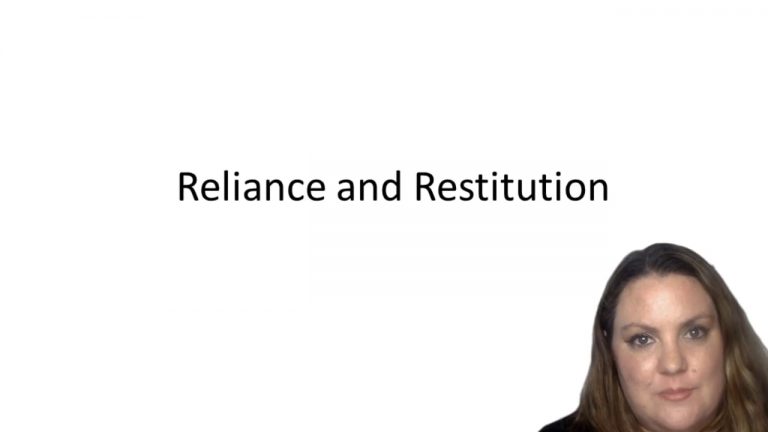SmartBrief
Confirm favorite deletion?
Contracts Keyed to Epstein
Watts v. Watts
Citation:
137 Wis.2d 506, 405 N.W.2d 303 (1987)Facts
The plaintiff and the defendant met in 1967, when she was 19 years old, was living with her parents and was working full time as a nurse’s aide in preparation for a nursing career. Shortly after the parties met, the defendant persuaded the plaintiff to move into an apartment paid for by him and to quit her job. The plaintiff alleges that during the parties’ relationship, and because of her domestic and business contributions, the business and personal wealth of the couple increased. Further, she alleges that she never received any compensation for these contributions to the relationship and that the defendant indicated to the plaintiff that he considered her to be his wife and that she would share equally in the increased wealth. Plaintiff alleges under the theory of unjust enrichment that the defendant accepted and retained the benefits of services she provided knowing that she expected to share equally in the wealth accumulated during their relationship.
Only StudyBuddy Pro offers the complete Case Brief Anatomy*
Access the most important case brief elements for optimal case understanding.
*Case Brief Anatomy includes: Brief Prologue, Complete Case Brief, Brief Epilogue
- The Brief Prologue provides necessary case brief introductory information and includes:
Topic:
Identifies the topic of law and where this case fits within your course outline.Parties:
Identifies the cast of characters involved in the case.Procedural Posture & History:
Shares the case history with how lower courts have ruled on the matter.Case Key Terms, Acts, Doctrines, etc.:
A case specific Legal Term Dictionary.Case Doctrines, Acts, Statutes, Amendments and Treatises:
Identifies and Defines Legal Authority used in this case.
- The Case Brief is the complete case summarized and authored in the traditional Law School I.R.A.C. format. The Pro case brief includes:
Brief Facts:
A Synopsis of the Facts of the case.Rule of Law:
Identifies the Legal Principle the Court used in deciding the case.Facts:
What are the factual circumstances that gave rise to the civil or criminal case? What is the relationship of the Parties that are involved in the case.Issue(s):
Lists the Questions of Law that are raised by the Facts of the case.Holding:
Shares the Court's answer to the legal questions raised in the issue.Concurring / Dissenting Opinions:
Includes valuable concurring or dissenting opinions and their key points.Reasoning and Analysis:
Identifies the chain of argument(s) which led the judges to rule as they did.
- The Brief Prologue closes the case brief with important forward-looking discussion and includes:
Policy:
Identifies the Policy if any that has been established by the case.Court Direction:
Shares where the Court went from here for this case.
Topic Resources
Topic Outline
Topic Refresher Course
Topic Charts & Notes

 3m 36s
3m 36s